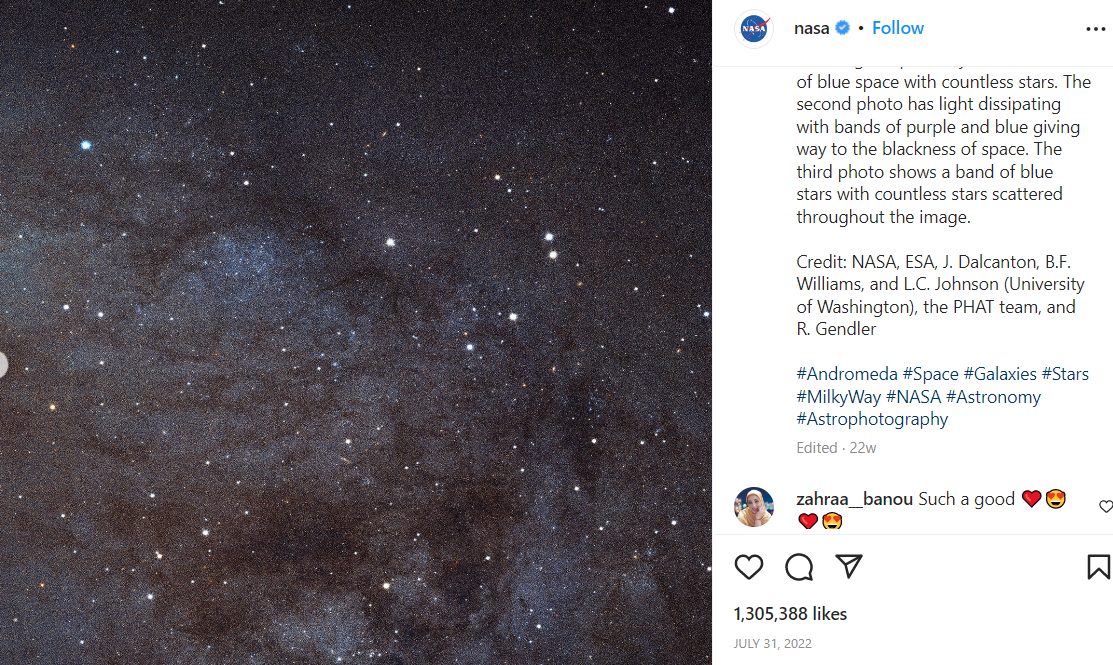The “largest-ever” image of the Andromeda galaxy put together by the Hubble Space Telescope was released by the American space agency NASA on Sunday.
The picture was captured seven years ago and it is the sharpest large composite image ever taken of our galactic neighbor.
According to the National Aeronautics and Space Administration, the image depicts a 48,000-light-year-long region of the Andromeda galaxy with over 100 million stars visible. The Instagram picture divides the panoramic image into three parts, with the last revealing a belt of blue stars with countless stars sprinkled around the image.
The photograph has captivated internet users since it was shared. It has received almost one million likes. “It is really gorgeous,” one user said. “It’s wonderful,” commented another. “Absolutely wonderful,” said the third person.

The space agency noted that because the Andromeda galaxy is 2.5 million light-years away, dozens of star clusters can be identified. According to NASA, our Milky Way galaxy and the Andromeda galaxy are comparable in size and form.

Notably, the photograph was previously posted in 2015 and was just re-shared. According to the agency, it depicts a 48,000-light-year region of the galaxy in its “natural visible-light colour.” “Because the galaxy is only 2.5 million light-years from Earth, it is a far larger target in the sky than the numerous galaxies photographed by Hubble that are billions of light-years away,” NASA noted.

Source: sci-nature.vip





